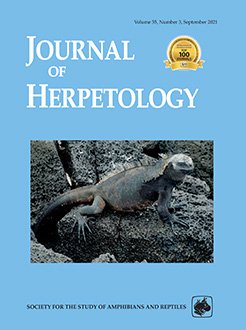For this study, we examined a large sample of museum specimens to ascertain the reproductive ecology of Rhinophrynus dorsalis (Mexican Burrowing Toad) in México. Seasonal aboveground activity was highest during May to August, which tracks monthly rainfall patterns across the region. Contrary to previous assertions, mean body sizes were similar between males and females but females attained larger maximum sizes. Male testis size was largest in May, tadpoles appeared in June, and juveniles were present in July, indicating that most breeding begins in May following the first heavy rains of the year. Few specimens possessed food in their stomachs suggesting that aboveground activity may be more devoted to reproduction than to foraging. The timing of reproduction was variable because most gravid females were encountered during May to August, but some were also present in October and January. Clutch size was estimated to range from 630 to 7,700 eggs, which was positively correlated with female body size. Size to sexual maturity in both males and females was reached in 8–9 mo after metamorphosis and at much smaller minimum and average sizes than previously reported. Adult body size was negatively related to latitude, such that the largest specimens were from the most southern latitudes, especially for males. The reproductive ecology of R. dorsalis resembles distantly related burrowing anurans more so than their close aquatic relatives in Pipidae.
How to translate text using browser tools
27 July 2021
Reproductive Ecology of Rhinophrynus dorsalis (Anura: Rhinophrynidae) in México
Daniel F. Hughes,
Daniel B. Wylie





